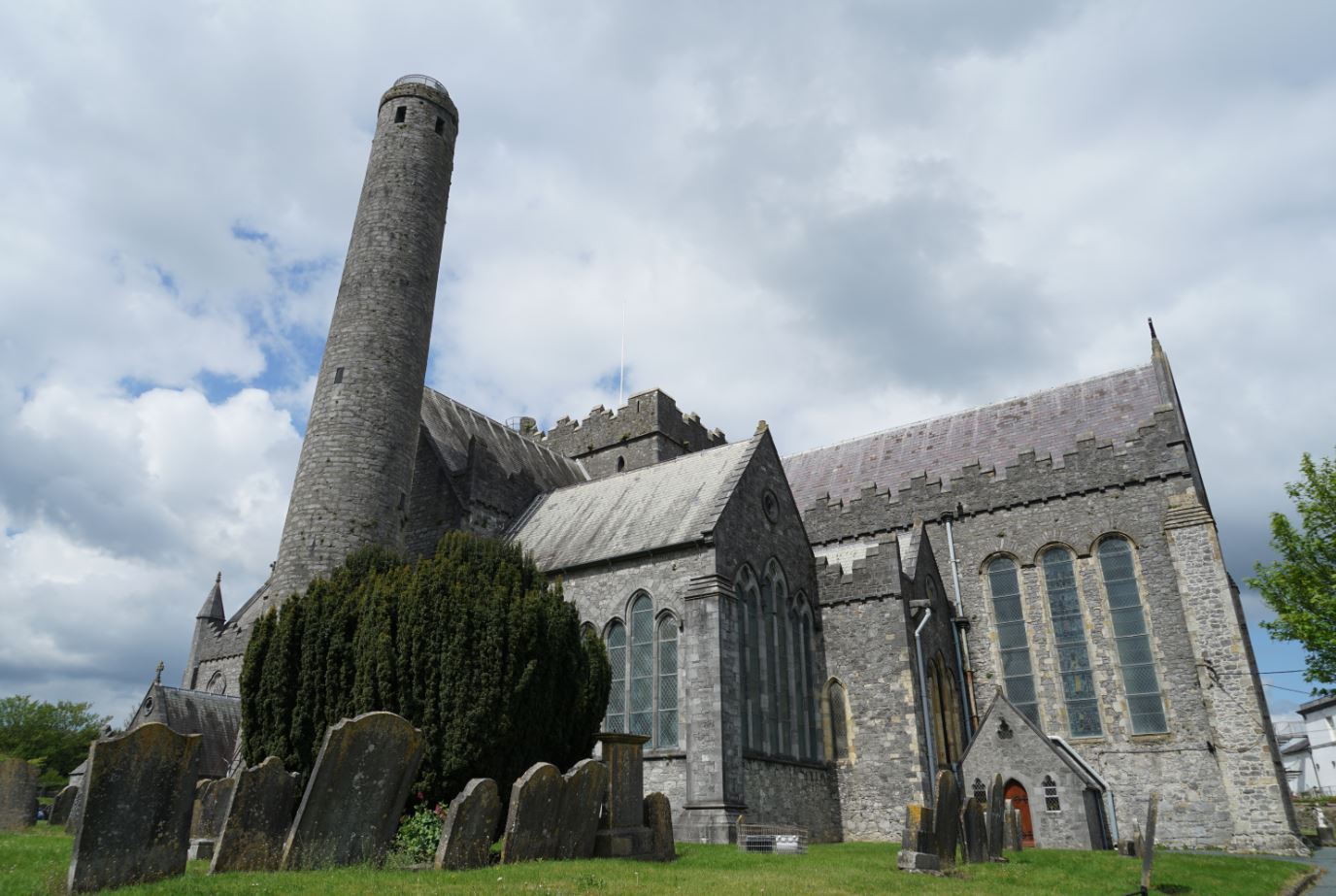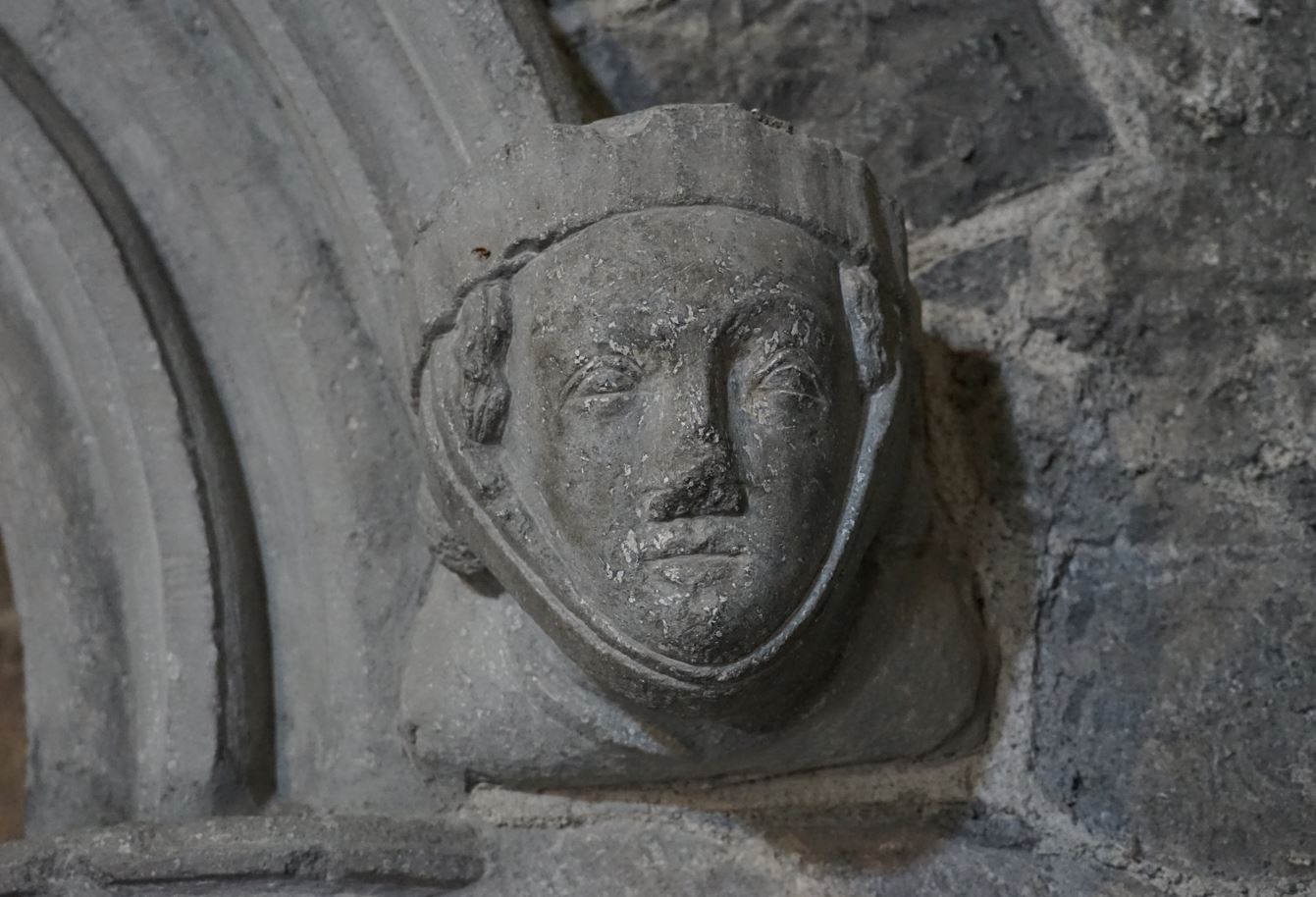1324 – the witchcraft trial of Alice Kyteler
In 1317, an English Franciscan friar, Richard Ledrede, was appointed bishop of St Canice’s cathedral in Kilkenny, seat of diocese of Ossory. This was the same year that Domhnall Ua Néill, king of west Ulster, wrote to Pope John XXII seeking support for Edward Bruce
as king of Ireland. Ledrede had received his new appointment directly from Pope John XXII at Avignon in France, where the papal enclave was located for much of the 14th century. Shortly later, the pope became the victim of an assassination attempt by poisoning and sorcery. In 1320 he ordered that witches should be investigated and interrogated as heretics. This became official church policy in 1326 with the Papal Bull known as Super illius specula, but two years before this, one man in Ireland had already taken pre-emptive action. In 1324, Richard Ledrede, bishop of Ossory, declared that his diocese was a hotbed of devil worshipers. The central figure in this affair was Alice Kyteler, a wealthy Kilkenny woman who was accused of witchcraft by her stepchildren. It was the first witchcraft trial to treat the accused as heretics, and the first to accuse a woman of having acquired the power of sorcery through sexual intercourse with a demon.
The Kytelers were a family of Flemish merchants who had settled in Kilkenny sometime during the mid-thirteenth century. In 1280 Alice Kyteler married William Outlaw, a wealthy Kilkenny merchant and moneylender. Their son, also William Outlaw, would later become the chief business partner of his mother. Evidently, Alice was unlucky in marriage. After the death of her first husband, Alice was subsequently married on two further occasions to merchant men. In each case, her latest husband was dead within a few years. Fourth time lucky, she was married Sir John le Poer. However, by this time, the stepchildren from husbands two and three had become jealous of the fact that Alice had accumulated considerable wealth from each marriage, and effectively denied them much of their inheritance. In the latter part of the 13th century the Church began to view witchcraft as a heresy, and in 1324 Alice Kyteler’s stepchildren complained to Bishop Ledrede that she had used witchcraft to acquire her wealth. Aware of the pope’s personal fear of witchcraft, the bishop took decisive action.
Seven charges were brought against Alice Kyteler and her accomplices: that they were denying Christ, yet they used a church for secret meetings; that they scattered the pieces of dismembered animals at cross roads as offerings to a demon called the son of Art; that in the skull of a robber they placed the organs of cocks, worms, nails cut from dead bodies, hairs from the buttocks and clothes from boys who had died before being baptised; that, from this brew, they made potions to incite people to love, hate, kill and afflict Christians; that Alice herself knowingly had carnal knowledge with a demon, from whom she received her wealth; and that Alice had used sorcery to murder some of her husbands and to infatuate others, with the result that they gave all their possessions to her and her son, William Outlaw, thus impoverishing her stepchildren. Furthermore, they claimed that Alice’s fourth husband, Sir John le Poer, was being poisoned.
We will never know if Alice Kyteler was ever guilty of any form of witchcraft. It is quite possible that the charges were entirely spurious and designed to circumvent the secular legal system. Alice had friends in high places, and her stepchildren may have realised that to pursue their inheritance claim through the secular court would have been a lengthy and costly exercise, one which they had no guarantee of winning. Instead, they may have decided that by bringing a charge of witchcraft they could avoid the secular court and pursue Alice through the ecclesiastical court on a charge of heresy. What Alice’s stepchildren may not have realised was that they had just opened a proverbial can of worms.
What followed immediately after Ledrede received the complaint was a complicated series of events that saw the bishop in direct conflict with the secular government on the legal jurisdiction of a charge of heresy. During the late medieval period, all bishops had their own court, which had the right to hear a wide variety of legal matters, including murder, theft and property disputes that related to the properties and estates owned by the diocese. However, outside the bishop’s estates, all disputes regarding property and money would be heard by the secular court of the lordship (in this case Kilkenny), and where these could not be decided, they were referred to the court of the justiciar, a sort of medieval equivalent to the modern Supreme Court.
Alice fled to Dublin, and in her absence from Kilkenny, she was excommunicated by the bishop. In Dublin she sought refuge with a relative of her first husband. The man in question was Roger Outlaw, chancellor of the English government in Ireland and prior of the Hospital of St John of Jerusalem at Kilmainham. While Alice was in Dublin, her eldest son, William Outlaw, remained in Kilkenny. The bishop set a day for William to appear before him, on a charge of both heresy and protecting heretics. William Outlaw also had friends in high places, including the seneschal Arnold le Poer (who appears to have been related to Alice’s most recent husband). Arnold had tasted defeat at the hands of Edward Bruce following the disastrous Battle of Ardscull in January 1316. The office of seneschal was effectively the chief judge and official of a medieval lordship, in this case Kilkenny. Arnold le Poer arrested and imprisoned bishop Ledrede for seventeen days, until the day appointed for William Outlaw to appear in the bishop’s court had passed. While in prison, Ledrede placed his diocese under interdict. No baptisms, marriages or burials could take place in the diocese until the interdict had been lifted. When he was eventually released, he left the prison in full episcopal regalia accompanied in procession by clergy and laity.
At the next sitting of Arnold le Poer’s secular court in Kilkenny, the bishop arrived dressed in full episcopal regalia, accompanied by a procession of priests and friars. Holding the Host in front of him, he forced his way into Arnold’s court and demanded the arrest of the heretics Alice Kyteler and her son William Outlaw. Sometimes the best form of defense is offence, and Arnold, calling the bishop ‘an ignorant low-born vagabond from England’, ordered him to stand in the dock. The bishop, holding up the Host, declaimed ‘Woe, woe, woe, that Christ should be sent to stand at the bar, a thing unheard of since he stood trial before Pontious Pilate’. Arnold then had the bishop forcibly removed from the court.
Alice Kyteler also went on the offensive and accused Ledrede of defamation of character. She appealed to the justiciar, who summoned the bishop to appear before his court. Now both sides had an opportunity to argue their case before the justiciar’s court in Dublin. Arnold le Poer effectively acted as a lawyer for Alice Kyeter and William Outlaw, and made an interesting line of defense: ‘As you well know, heretics have never been found in Ireland, which has always been called the ‘Island of Saints’. Now this foreigner comes from England and says we are all heretics and excommunicates. Defamation of this country affects everyone of us, so we must all unite against this man’. Arnold le Poer’s plea was in vain. The justiciar’s court decided in the bishop’s favour, and he was permitted to hear the trial in Kilkenny. Alice Kyteler fled from Ireland and was never heard of again. Her son William Outlaw and their Kilkenny associates were imprisoned and examined by the bishop in an inquisitorial procedure, after which they confessed to the charges of heresy. William was served with a sentence of penance, which included hearing three masses every day for one year and giving food to the poor. Alice Kyteler’s maid servant, Petronilla de Midia, was not so lucky, and was burnt at the stake as a heretic. In the meantime, the bishop learned that William Outlaw had failed to undertake his penance. He was imprisoned again and was only released after he lay in the mud before the bishop and a large crowd of clergy and laity. His penance was increased to include a visit to the Holy Land on the first available boat.
One of the initial penances that William Outlaw received from Bishop Ledrede was to cover portion of the St Canice’s Cathedral roof in lead. When his penance was increased, so too was the portion of the cathedral roof to be covered in lead. Ironically, in 1332, a Kilkenny Franciscan friar by the name of John Clyn, recorded that the bell tower of St Canice’s collapsed, destroying the much of the choir, reputedly due to the weight of the new lead roof over the cathedral. Bishop Ledrede was not in Kilkenny to witness this terrible tragedy: he had fled Ireland and was in exile at the papal conclave of Pope John XXII in Avignon. He did, however, return years later and was buried in the chancel of St Canice’s cathedral.



